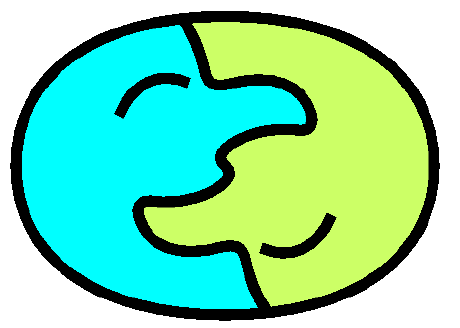Divacon: Parallel Divide and Conquer
Tutorial and Homework
My friend and hero, George Mou, has given mathematical form and intellectual rigor to the optimal decomposition, understanding, design, and implementation of parallel computer algorithms. Parallel Divide-and-Conquer using Divacon offers a simple, concretely achieveable, analytic and expressive methodology for design of such algorithms: the PDC() function generator and its mathematical definition. I call it an opinionated approach because there are guiderails all around, in the form of extremely limited options for expressing extremely few elements, but he considers it truth: see, he writes mathematics. And he has found and expressed the simple truths at the bottom, better yet, he teaches us to do the simple math with him. You will find his writing to be comprehensive and practical, in a style which is clear and mathematical. His maxim:
To write clearly about something, it is best to fully understand it.The reader can sense magisterial understanding, and I find myself awestruck by the power conveyed to the comprehending reader by the simple combination of simple parts. See the Bit. Parallel algorithms are notoriously inconceiveable, so that it took Tukey and Gauss to come up with the good one (FFT, of course). (If only one had read the other, it wouldn't have taken 150 years.) Mou is in that stratosphere, despite lack of appreciation and uptake by history (so far), perhaps because his work does require careful study. George himself says, what you can read in one hour, may require twenty hours of study to really understand.For my own interest and to serve others such as yourself I have done careful and thorough note-taking, and I'm not saying I understand more than a fraction, but my descriptions might help you enter George's universe of thinking, a paradigm that is the mathematics of parallel processing.
According to Thomas S Kuhn, The Structure of Scientific Revolutions, a "paradigm" is a scientific approach understood by those educated into it, and includes ways of thinking, canonical examples, and a sociocultural constitution of intellectual values, of what is important and how to look at things in their certain way. Paradigms shift happens typically through generational change; the old scientists retire and die, and the new ones that follow the new paradigm replace them over time. The period during which one paradigm holds sway and academics can make incremental, workmanlike progress on the goals of the widely accepted resarch program holding no fundamental surprises, is called the period of "Normal Science". Once in a while, a great new way of thinking within an area of science arises, the old guard rejects it as incomprehensible or incoherent or ignoreable or irrelevant, or "wrong" only in the subjective sense of according to their own certain criteria of what ideas may count. But the new younger generations find it compelling and superior, and learn about it perhaps on the side due to their natural and actual interest in their topic for which the new paradigm offers a more comprehensive and better view. Eventually the cranky old guard retires, and then a paradigm shift has occurred.Divacon, DST, Black White Arrays, and the mathematics of parallel computation are subjects that require sufficient and thoughtful practice, in order to fully understand them before being able to practically use them. But the rewards are great for those who are able to create optimal parallel programs, and the path is clear and open, if you have the courage to take it.
Zhijing George Mou, A Formal Model for Divide-and-Conquer and Its Parallel Realization, May 1990, Research Report YALEU/DCS/RR-795.Let's do it!
|
